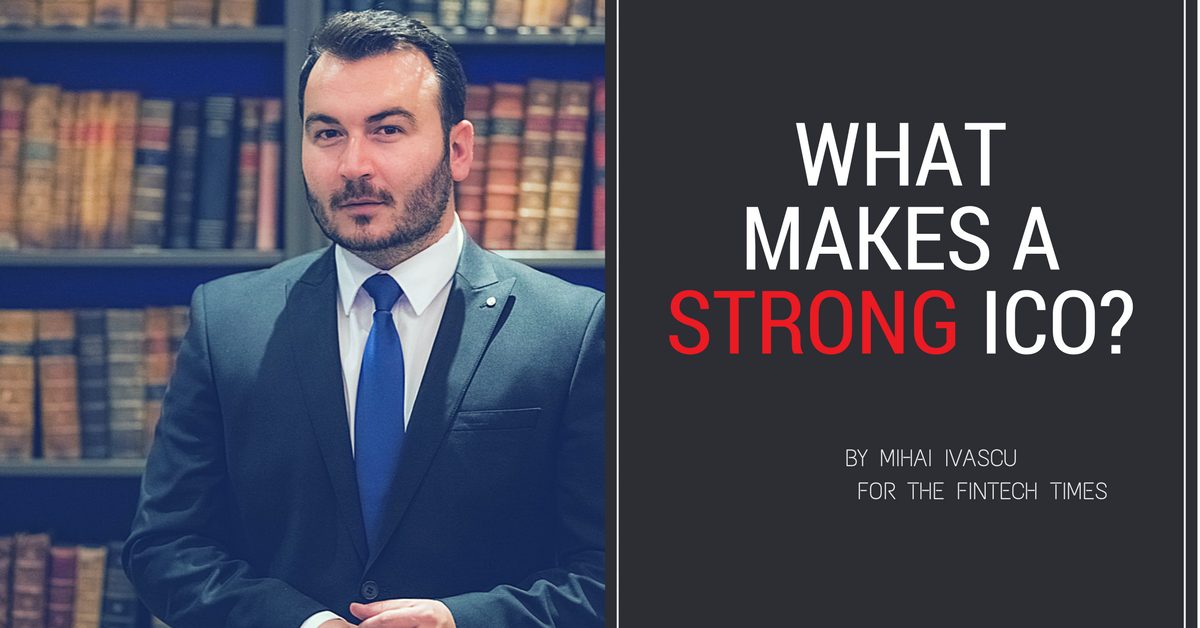by Mihai Ivascu, CEO of Modex for The Fintech Times
What is a strong, healthy ICO? It’s a project that can go through due diligence. You need to be able to check out the entity that owns the project, you need to be able to check that they have a team, that they have employees. You need to show that you have a project behind it and that you already have an alpha, or a beta, or something on the market. That you have a governance system internally, and you can answer questions like – who’s the beneficiary of the fund? If somebody answers that question with ‘me and my mother’, and you still decide to invest in the company, that’s your decision, and you can do that if you really believe in the project. But, at the end of the day, it’s important that they need to disclose.
Look at the governance – how the funds are being consumed? If it’s a holding company like us, with 14 shareholders and with a proper structure then ok. If it’s Joe from the street then, again, you can assess your risk over there. You also need to look at the Token dynamics and the token economics, you need to look at the White Paper, for sure, look at the budget – what’s the structuring of their budget? Because you see all these ICOs raising 50-60 million and they say 40% marketing, but who can manage 30 or 40 million as a marketing budget between 2 friends? I mean, it’s just misusing the funds.
I think in the next 6 month, we’re going to see a shi – ICOs will need to be really close to IPOs in terms of the diligence. You’ll need to produce a minimum of 20 strong documents to back your ICO. So, if it’s just you and your friend, it will be impossible to do an ICO, or you can do an ICO for £300,000, which is ok. You raise £300,000, you build something, it’s not bad – but you don’t go and raise millions when you don’t have anything. People are starting to see that, they are starting to get burned, because, again, you’re doing an ICO, but you don’t have any project.
You launched the coin on an exchange, but nine months or a year goes by, and you still don’t have a product. What happens with the value of the coin?..
There is no demand for it, so the price is destroyed. The problem now, and I think this should be very clear, is that an ICO is a start, not an end. You’re starting your journey with an ICO, you’re not ending it. But some of us think – ‘an ICO is just our biggest milestone, we need to do the ICO and then we’ll see’. If they don’t have a strong governance, some clear milestones and multi-sig wallets with 5 signatures, with trustees – proper structure, it’s a problem.
This is a non-regulated space. Clearly, the utility tokens are out of scope at the moment, so we think you should have a clear set of self-regulating procedures. From the use of funds, to the internal communications, to the security on the server, the security on the wallets, even the signature on the wallets. A proper procedure can be quite heavy, but it protects the money of the contributors. We see a lot of innovation in this space, also with the Blockchain. For example, Spice VC is the rst VC that is tokenising the assets, so you have liquidity from day one. They are a VC, they invest, but actually, all of their parts are liquid, so you can buy parts immediately on the secondary market in a VC that is actually non-liquid. So we see a lot of innovation in this space coming from the blockchain.



